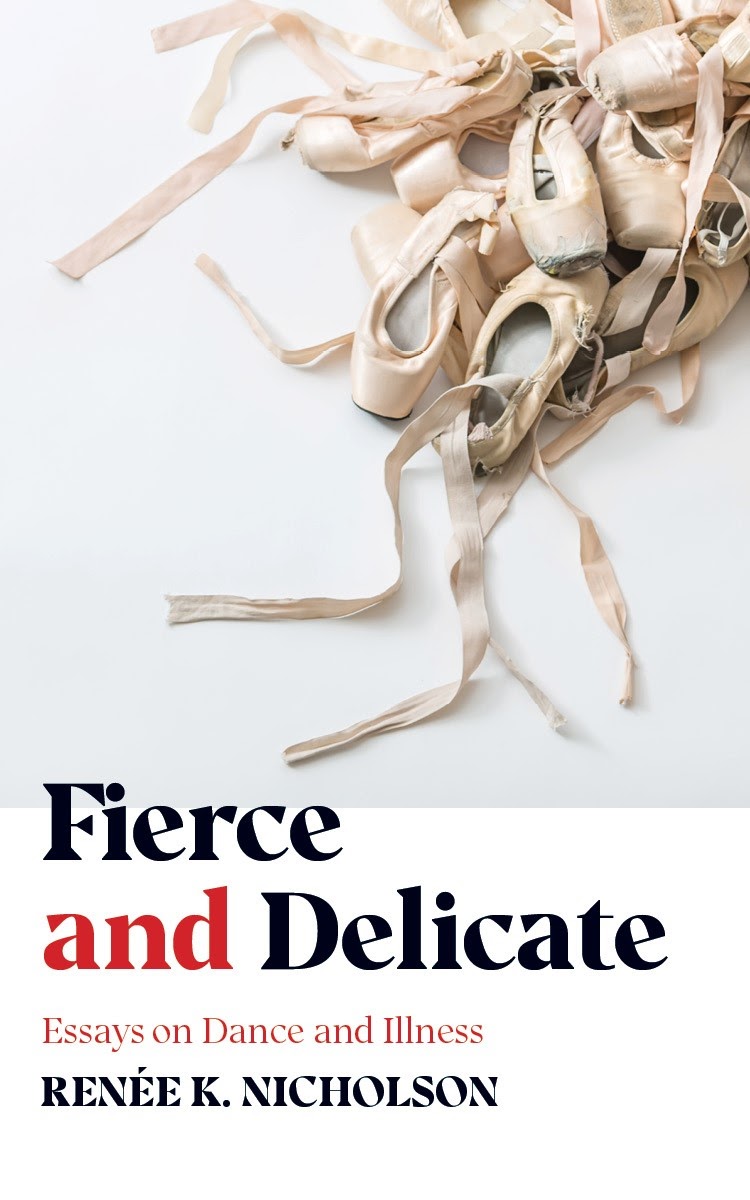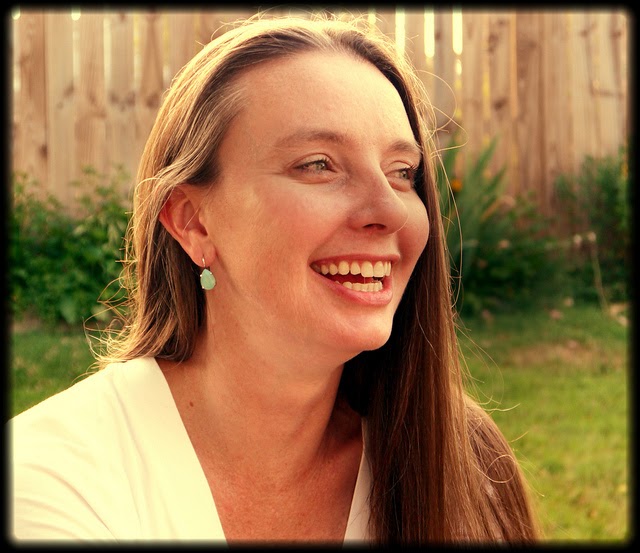“Lyrical and fascinating” –Buzzfeed News
 Morgantown, West Virginia– Renée Nicholson’s professional training in ballet had both moments of magnificence and moments of torment, from fittings of elaborate platter tutus to strange language barriers and unrealistic expectations of the body. In “Fierce and Delicate” (WVU Press, May 1, 2021) she looks back on the often confused and driven self she had been shaped into—always away from home, with friends who were also rivals, influenced by teachers in ways sometimes productive and at other times bordering on sadistic—and finds beauty in the small roles she performed. When, inevitably, Nicholson moved on from dancing, severed from her first love by illness, she discovered that she retained the lyricism and narrative of ballet even as she negotiated life with rheumatoid arthritis.
Morgantown, West Virginia– Renée Nicholson’s professional training in ballet had both moments of magnificence and moments of torment, from fittings of elaborate platter tutus to strange language barriers and unrealistic expectations of the body. In “Fierce and Delicate” (WVU Press, May 1, 2021) she looks back on the often confused and driven self she had been shaped into—always away from home, with friends who were also rivals, influenced by teachers in ways sometimes productive and at other times bordering on sadistic—and finds beauty in the small roles she performed. When, inevitably, Nicholson moved on from dancing, severed from her first love by illness, she discovered that she retained the lyricism and narrative of ballet even as she negotiated life with rheumatoid arthritis.
An intentionally fractured memoir-in-essays, “Fierce and Delicate” navigates the traditional geographies of South Florida, northern Michigan, New York City, Milwaukee, West Virginia, and also geographies of the body—long, supple limbs; knee replacements; remembered bodies and actual. It is a book about the world of professional dance and also about living with chronic disease, about being shattered yet realizing the power to assemble oneself again, in a new way.
“Fierce and Delicate: Essays on Dance and Illness”
Renée K. Nicholson | May 1, 2021 | West Virginia University Press | Nonfiction, Essays
Paperback | ISBN: 978-1-952271-01-4 | $19.95
“Remarkable… as breathtaking and beautiful as ballet itself”
– Dinty W. Moore, author of Between Panic and Desire
 RENEE K. NICHOLSON splits her artistic pursuits between writing and dance with scholarship in narrative medicine. She is Associate Professor and Director of the Humanities Center at West Virginia University. She was the 2011 Emerging Writer-in-Residence at Penn State-Altoona, 2018 recipient of the Susan S. Landis Award for Distinguished Service to the Arts (WV Governor’s Arts Awards), the 2019 winner of the Outstanding Public Service Award from the Eberly College of Arts and Sciences (WVU), and the 2020 Winner of the Nicholas Evans Award for Excellence in Advising (WVU). Her books include two collections of poetry, Roundabout Directions to Lincoln Center and Post Script; a memoir-in-essays, Fierce and Delicate: Essays on Dance and Illness; and the anthology Bodies of Truth: Personal Narratives on Illness, Disability, and Medicine.
RENEE K. NICHOLSON splits her artistic pursuits between writing and dance with scholarship in narrative medicine. She is Associate Professor and Director of the Humanities Center at West Virginia University. She was the 2011 Emerging Writer-in-Residence at Penn State-Altoona, 2018 recipient of the Susan S. Landis Award for Distinguished Service to the Arts (WV Governor’s Arts Awards), the 2019 winner of the Outstanding Public Service Award from the Eberly College of Arts and Sciences (WVU), and the 2020 Winner of the Nicholas Evans Award for Excellence in Advising (WVU). Her books include two collections of poetry, Roundabout Directions to Lincoln Center and Post Script; a memoir-in-essays, Fierce and Delicate: Essays on Dance and Illness; and the anthology Bodies of Truth: Personal Narratives on Illness, Disability, and Medicine.
In an interview, Renée K. Nicholson can discuss:
- How dance, writing, and teaching have each informed her creative life
- Her writing process, and how these essays came to be
- How she approached writing about ballet in a way that would be accessible to non-dancers, and why this is important to her
- How this memoir-in-essays may align with and diverge from readers’ assumptions about both ballet and chronic illness
- What narrative medicine is, and how it influences her understanding of chronic illness and writing
An Interview with Renée K. Nicholson
1. How has your background as a dancer influenced your approach to writing and teaching?
I have always had the “daily class” mentality from ballet when it comes to writing. That is, I find that for me the regular routine of writing is what helps me grow both technically and artistically. Dance is a progression from simpler to more complex movements, and when something isn’t working, being able to break things down into the smaller elements often helps, and I use this approach both in my own writing and teaching—teaching writing, dance, or really anything else.
2. You mentioned that when you first started writing about dance, you mostly wrote fiction. How did you transition into writing stories about your own life?
At first, I lacked confidence in my story as a dancer because I was never a famous one and because things fell apart physically early in life. I also read a lot of fiction and admired many fiction writers, such as Susan Minot and Lorrie Moore. In workshops, people would mistake my characters for a version of me. I often found that secretly funny because the characters I created were better at aspects of ballet than I was—like having great extensions. Characters might have been a kind of wish fulfillment! But as I studied and read more nonfiction, I realized I had my own story to tell. I also read an essay in Mid-American Review, “Graham Crackers” by the excellent nonfiction writer and former Martha Graham company member Renée E. D’Aoust. I fell in love with that essay and wanted to write more of my own experience because of it.
3. You write about ballet in a way that is accessible to non-dancers. How did you achieve this? Why was this an important pursuit for you?
In one of my graduate workshops, my friend Matt Ferrence wrote an excellent essay about golf. Now, I know very little about golf, and of course the piece was about way more than golf itself. It was about using golf to find a familiar place while living in a foreign country and constantly feeling out of place. I wondered if I might do something similar with dance—what might be universal in my dance experience? The tricky part is making sure that the pieces will still land with someone who does have a dance background. There had to be that element that anyone might connect with—determination, perhaps. Resilience. Dancers have these qualities, but so do lots of people working towards all kinds of pursuits. As well, I wanted to convey the sense I had as a young person of loving dance so much. Could I translate a bit of that love of the art to others, even if they weren’t dancers? That motivated a lot of writing choices.
4. Your writing also explores your experience with rheumatoid arthritis (RA). How did you approach writing about illness?
Early on, I got a lot of well-intentioned-but-ultimately-unhelpful advice about writing about my RA. It took getting knee-replacement surgery in my thirties and learning how to walk again for me to own my own illness experience. After that, I wouldn’t let people tell me how to portray it. Instead, I started to learn how important it is to have fidelity to one’s own lived experience. Knee replacement was humbling, but that same humility allowed me to start re-teaching myself things about ballet that maybe I wouldn’t understand any other way. The more that happened, the more I felt compelled to write about both dance and illness. It’s all about the body, and my imperfect body, and this journey we’re going on together.
5. Can you tell us about narrative medicine? What is it, and how did you first find yourself interested in it?
One cold evening in January 2015, a palliative care doctor called me to see if I could help one of his patients write a memoir. The patient had ALS and couldn’t pick up a pen or use a manual keyboard. I was intrigued, and met with the patient, Jamie, and started working with him. I also felt really out of my element. Google searches led me to this practice called “narrative medicine.” A way to describe narrative medicine is bringing narrative competence to clinical situations, and the founder of the discipline, Dr. Rita Charon, writes that “the care of the sick unfolds in stories.” This resonated with me as I wrote about dance and RA, and as I worked with Jamie. I would later work with various medical professionals, patients with cancer, and patients with HIV, among others. Narrative medicine gave me a way to bring expression to those who had need of it as they lived with illness. It was a way to connect the art of writing by serving others and honoring their stories and experiences.
6. Were there any resources that were particularly helpful to you when writing this collection? Where would you suggest readers go to learn more about RA, chronic illness, or narrative medicine?
When I first wrote the essays, I just wrote them without thinking much about the narrative medicine aspects. As I revised the collection, I completed a professional certificate in Narrative Medicine from Columbia University, and that experience certainly helped me shape and revise the collection. Now, you don’t have to invest the time, energy, and money into the certificate to learn more, but I would point people to Rita Charon’s book, Narrative Medicine, Honoring the Stories of Illness, and her edited collection, The Principles and Practice of Narrative Medicine. Another book that was particularly useful to me was Louise DeSalvo’s Writing as a Way of Healing. Reading the stories of other people who have experienced illness was very instructive to me, and during the time I finished writing and revising the pieces in my book, I also worked with Dinty W. Moore and Erin Murphy on an anthology around illness, disability, and medicine, Bodies of Truth. Those stories still inspire me, and the contributors still strike me as honest and brave.
7. Anything else you’d like to share?
If there is one thing I feel like I can share with others, it’s to write the book (or essay, story, etc.) that’s in you to write. I got much well-intentioned feedback while writing Fierce and Delicate, from agents who said I should fictionalize my experience into a novel, to instructors who wanted me to characterize my experience in melodramatic ways that didn’t feel authentic to me. I stuck to writing this book in the way that felt right to me, and captured what I wanted to say in the way I wanted to say it. Whether you write your experience for future generations of your family to read or because you want to publish a book, tell your story in your voice, in your way. Writers often talk about finding their voice, and I suppose I believe in discovering that true, authentic voice, and our ability to find and open spaces for our stories.

A former award-winning journalist with national exposure, Marissa now oversees the day-to-day operation of the Books Forward author branding and book marketing firm, along with our indie publishing support sister company Books Fluent.
Born and bred in Louisiana, currently living in New Orleans, she has lived and developed a strong base for our company and authors in Chicago and Nashville. Her journalism work has appeared in USA Today, National Geographic and other major publications. She is now interviewed by media on best practices for book marketing.

